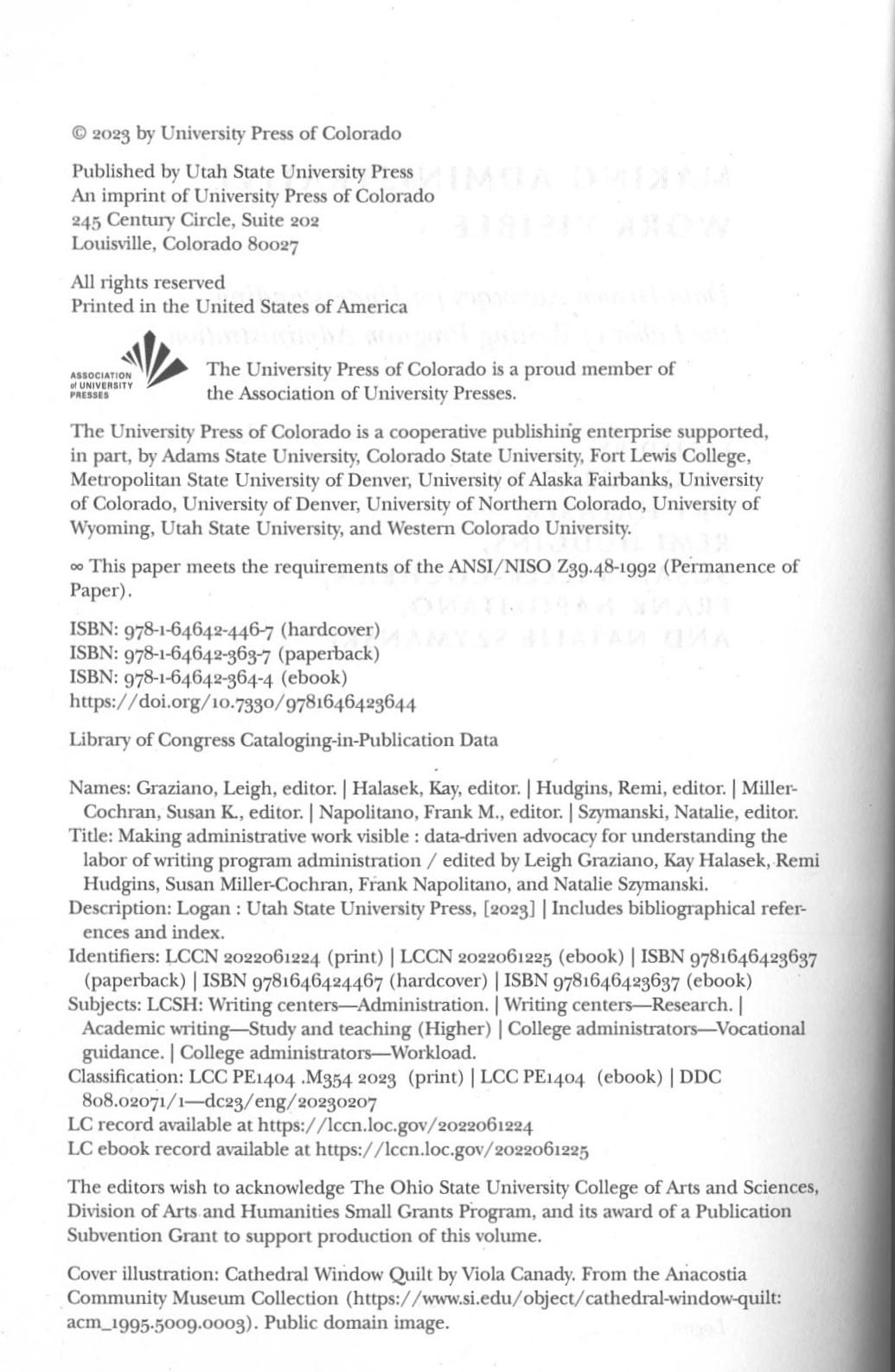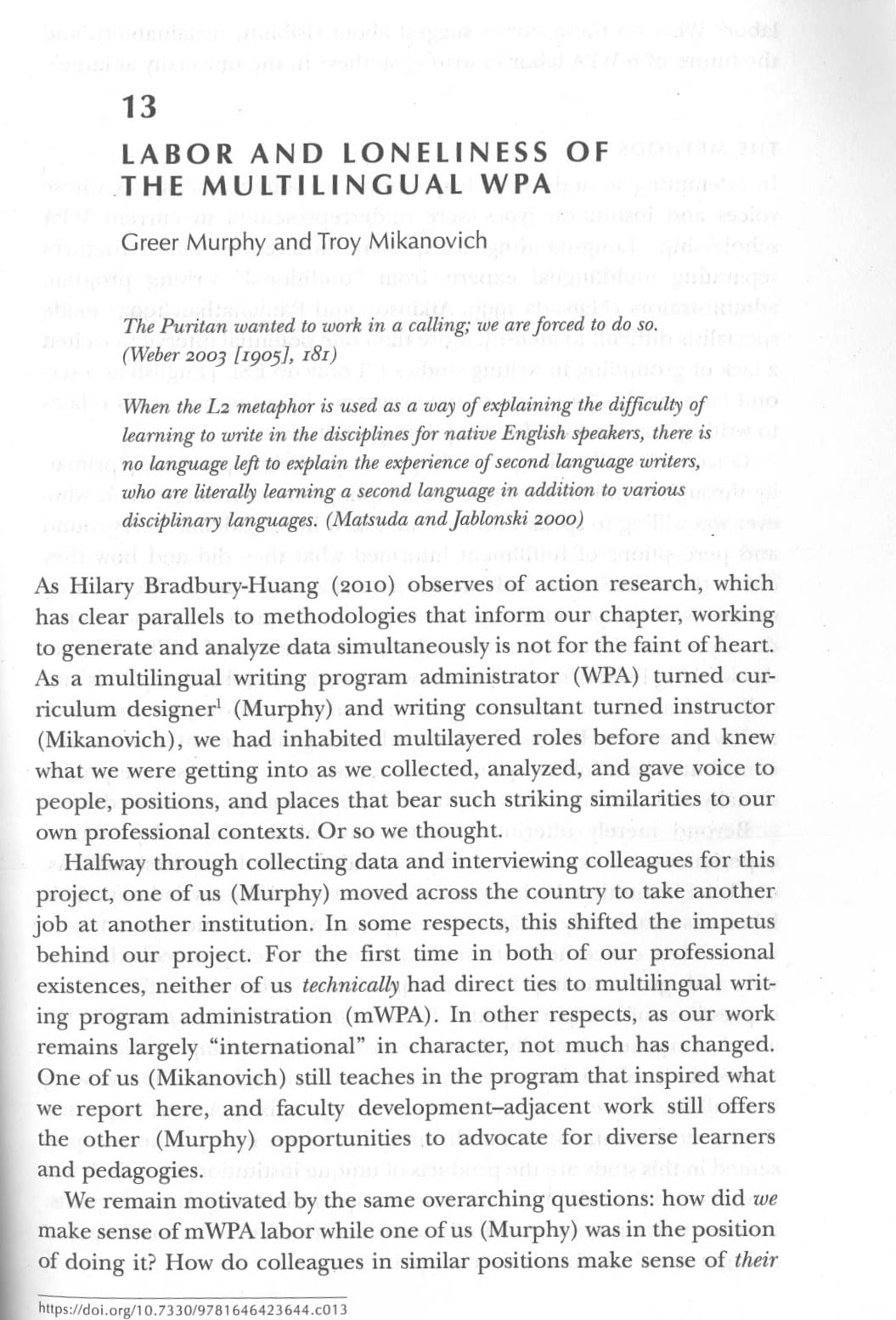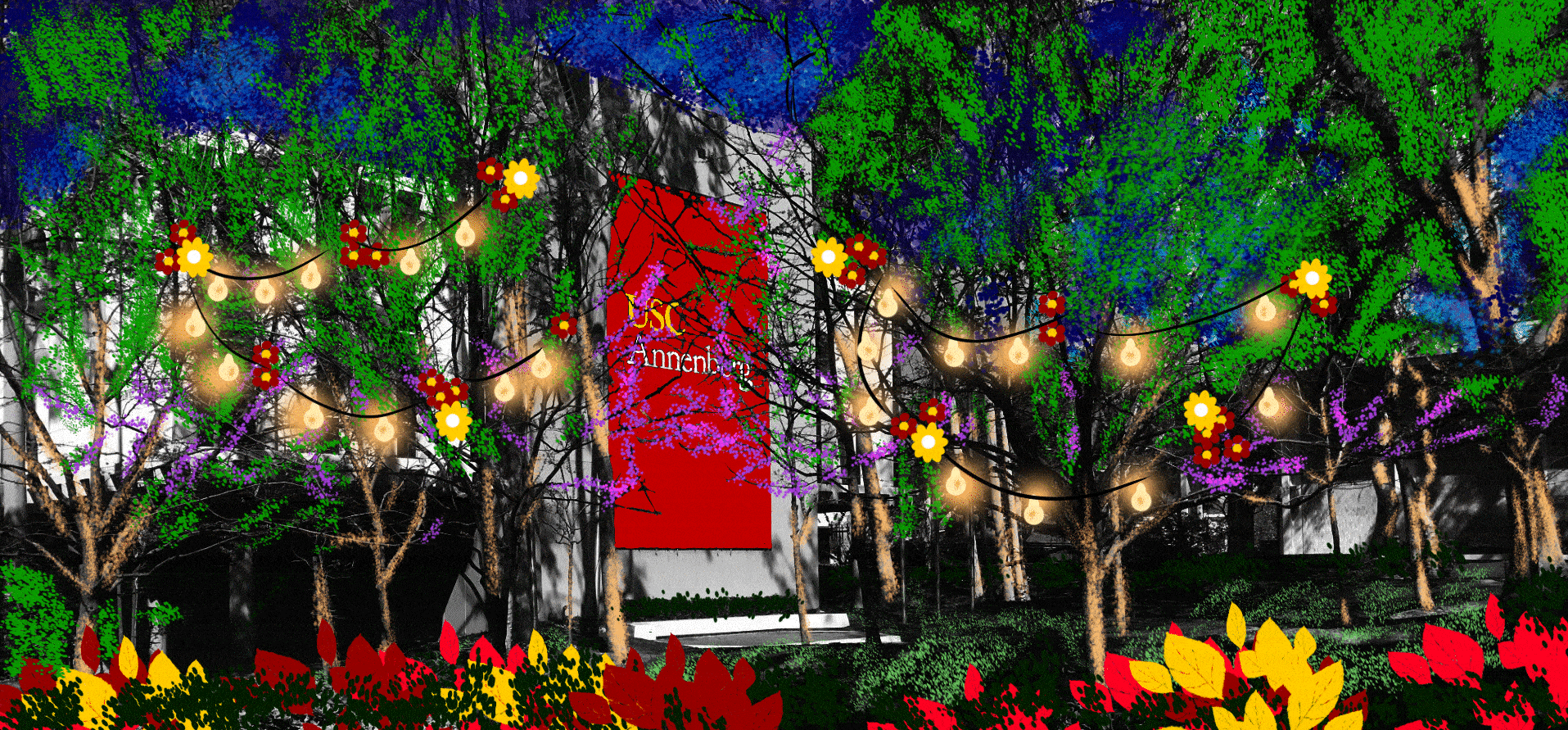Citing a chapter in a book is similar to citing an article in a journal: chapter-article, journal-book. The one major difference is that you include the editorial information with a chapter/book and omit it for the article/journal. But, just because the process is similar doesn’t mean the product is similar. Italics, capitalization, and punctuation aren’t necessarily the same. In the sixties, a niche movement of theologians proclaimed that the march of history would inevitably reveal the absence–the death–of God. That feels relevant whenever I write about the APA’s punctuation requirements.
There’s more information to juggle than when you are just citing a book authored by a single author or a group of authors on one specific topic (that’s called a monograph). Just think about it in terms of giving credit where credit is due for every step of the process: Someone wrote the chapter (cite them); someone edited the collection and assembled all the chapters (cite them); some company published the collection (cite it).
General form of a reference entry for a chapter of a book
Author, A. A., Author, B. B., & Author C. C. (YEAR). Title of the chapter: Sentence-case capitalization. In A. A. Editor, B. B. Editor, & C. C. Editor (Eds.), Title of the book: Italicized in sentence-case capitalization (1st/2nd/3rd/etc. ed., pp. #chapterstart-#chapterend). Publisher in Title Case. DOI
When you’re putting together your reference entry, you will need the following information:
- Author(s) of the chapter
- Editor(s) of the book
- Year of publication
- Original year of publication (if different)
- Title of the chapter
- Title of the book
- Edition (don’t worry about this if it is the first-and-only edition)
- Page range of the chapter
- Name of the publishing company
- DOI (digital object identifier)–if you’ve got one
As with any material that you want to cite, assemble what information you can, but don’t sweat it if you come up short when dealing with sources that seem a little weird.
Example
Here is the chapter “Labor and Loneliness of the Multilingual WPA,” written by myself and Dr. Greer Murphy for the book Making Administrative Work Visible:



- Author(s) of the chapter: Greer Murphy and Troy Mikanovich
- Editor(s) of the book: Leigh Graziano, Kay Halasek, Remi Hudgins, Susan Miller-Cochran, Frank Napolitano, and Natalie Szymanski
- Year of publication: 2023
- Original year of publication (if different)
- Title of the chapter: Labor and Loneliness of the Multilingual WPA
- Title of the book: Making Administrative Work Visible: Data-Driven Advocacy for Understanding the Labor of Writing Program Administration
- Edition (don’t worry about this if it is the first-and-only edition)
- Page range of the chapter: 201-216
- Name of the publishing company: Utah State University Press
- DOI (digital object identifier)–if you’ve got one: https://doi.org/10.7330/978164423644.c013
If we plug that into the general template from the top of the page, we get this:
Murphy, G., & Mikanovich, T. (2023). Labor and loneliness of the multilingual WPA. In L. Graziano, K. Halasek, R. Hudgins, S. Miller-Cochran, F. Napolitano, & N. Szymanski (Eds.), Making administrative work visible: Data-driven advocacy for understanding the labor of writing program administration (pp. 201-216). Utah University Press. https://doi.org/10.7330/978164423644.c013
Citing a book chapter in your paper
To cite a book chapter, you can use either a narrative citation or a parenthetical citation:
Narrative citation: “Murphy & Mikanovich (2023) is among the most stunning pieces of scholarship that anyone has ever produced.”
Parenthetical citation: “Multilingual WPAs (mWPAs) are stuck between “hyper-visibility and invisibility” and must navigate the ways that their work will be implicated (often by others) in philosophical and political debates about the future of international scholarship at the university (Murphy & Mikanovich, 2023, p. 211).”
